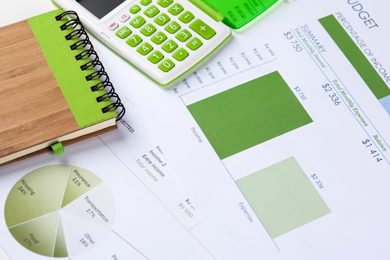This plan includes
- Limited free courses access
- Play & Pause Course Videos
- Video Recorded Lectures
- Learn on Mobile/PC/Tablet
- Quizzes and Real Projects
- Lifetime Course Certificate
- Email & Chat Support
What you'll learn?
- Know how to organize models in Excel
- Be able to budget the business performance
- Know how to model financial statements
- Understand how the financial statements are linked together
- Enhance your current Excel files
- Format spreadsheets in a professional way
- Know how to forecast sales and expenses
- Understand the key assumptions that drive a budget
Course Overview
If you are currently working in an FP&A role, or anywhere between accounting and finance, there’s a high chance you’ll probably face the challenge of preparing a budget statement. It would be great if you are ready to tackle such a challenge with confidence and promptly.
And this is the course to prepare you for that!
You willstart with an empty Excel spreadsheet and build acomplete dynamic model for a 3-statement budget in Excel!
What you’ll get out of this course?
Create a 3-statement Budget Model in Excelcourse will guide you through the actual practical process of creating a budget model in Excel, step by step. We will define a clear structure and build a robust dynamic model, which you can reuse over and over again. I will help you understand the flow of information between different parts of a budget model. You will gain knowledge on how to forecast sales, production cost and other expenses. We will define a consistent framework of formatting our model, to make it easier to read and understand, even after time has passed.
I will show you some ways to tremendously improve the value of your budget by adding validation checks, dynamic scenarios and sensitivity analysis. We will take it to the end and prepare a summary sheet that is ready to print and share with stakeholders.
For this course, I anonymized a real set of company data so that you will see a real-life example.
After you take the Create a 3-statement Budget Model in Excel course, you will have the confidence to prepare your complex models and bring value to any budget you have to work on.
What should you know to take the course?
This course is aimed at an intermediate level of students. We will go over the main shortcuts and formulas that we use in the model, and you will have to become familiar with those, to be able to follow along. I expect you to have solid fundamental knowledge on Excel, be able to use formulas, link to cells in other sheets, know how the standard formatting tools and the ribbons work. If you are entirely new to Excel, this course will be hard to take. Please, take a look at some of the excellent introductory courses here on Learnfly, and come back after you’ve mastered the fundamentals of Excel.
To fully understand the model, you will need some basic accounting knowledge. I explain everything whenever we go into specifics. Still, I expect you to be familiar with an Income Statement, Balance Sheet, and Cash Flow Statement, have a general idea of how these are linked together. I would also expect you to understand words like Depreciation and Amortization, Interest, Cash Flows, and other similar terms.
It would still be possible to follow along and learn a lot from the course, even without basic accounting knowledge, but I would suggest you get yourself familiar with that first, and then take the Create a 3-statement Budget Model in Excel course.
Who is this course for?
I made the Create a 3-statement Budget Model in Excel course to serve as a practical guide on how to build high-quality budgets in real companies. The course is most suitable for:
- Junior to Mid-Senior finance and accounting professionals, who are engaged in the budgeting process;
- Business owners and entrepreneurs who want to understand how budgeting works in practice;
- Managers in start-ups where no finance professionals are available;
- Students in Finance and Economics majors who wish to get a head start.
I hope you are ready to upgrade yourself, learn how to build a 3-statement budget model in Excel, and propel in your career!
Are you excited to start?
Then enroll in the course, and I’ll see you in class!
Pre-requisites
- Microsoft Excel 2010 or later
- Comfortable with Basic Excel Functionality
- Knоwledge on Fundamental Accounting Principles
Target Audience
- Junior to Mid-Senior finance and accounting professionals, who are engaged in the budgeting process
- Business owners and entrepreneurs who want to understand how budgeting works in practice
- Managers in start-ups where no finance professionals are available
- Students in Finance and Economics majors
Curriculum 55 Lectures 05:28:02
Section 1 : Getting Ready
- Lecture 2 :
- About this Course
- Lecture 3 :
- Enable the Developer Tab in Excel
- Lecture 4 :
- Download Resources
- Lecture 5 :
- Install Magnimetrics Tools_EDITED
- Lecture 6 :
- What is Budgeting?
- Lecture 7 :
- Excel Functions Refresher
- Lecture 8 :
- Excel Shortcuts
- Lecture 9 :
- Discuss Source Files
Section 2 : Income Statement
- Lecture 1 :
- Let's get started
- Lecture 2 :
- Create the Sales Budget
- Lecture 3 :
- Forecasting Performance Part 1
- Lecture 4 :
- Forecasting Performance Part 2
- Lecture 5 :
- Starting the Income Statement
- Lecture 6 :
- Direct Material Costs
- Lecture 7 :
- Production Staff Cost
- Lecture 8 :
- Production Overheads
- Lecture 9 :
- Issues with linked files
- Lecture 10 :
- Mapping the Expenses Budget
- Lecture 11 :
- Administrative Expenses
- Lecture 12 :
- Selling Expenses
- Lecture 13 :
- Expense on Spare Parts
- Lecture 14 :
- Depreciation Expense and PPE Schedule
- Lecture 15 :
- Amortization Expense and Intangibles Schedule
- Lecture 16 :
- Interest Expense and Investment Loan Schedule
- Lecture 17 :
- Interest Expense and Working Capital Loan
- Lecture 18 :
- Other Expenses
Section 3 : Balance Sheet
- Lecture 1 :
- Starting the Balance Sheet
- Lecture 2 :
- PPE, Intangibles and Deferred Tax Assets
- Lecture 3 :
- Cash Conversion Cycle Historical Review
- Lecture 4 :
- Working Capital - Annualized Sales and Cost of Goods Sold
- Lecture 5 :
- Working Capital - Inventory
- Lecture 6 :
- Working Capital - Receivable
- Lecture 7 :
- Working Capital - Payables
- Lecture 8 :
- Intercompany Receivables
- Lecture 9 :
- Other Receivables
- Lecture 10 :
- Investment and Working Capital Loans
- Lecture 11 :
- Other Payables
- Lecture 12 :
- Retained Earnings & Pre-tax Profit
- Lecture 13 :
- Share Capital and Reserves
Section 4 : Cash Flow Statement
- Lecture 1 :
- Link the Cash Flow Statement
Section 5 : Improving Our Model
- Lecture 1 :
- Dynamic Validation Checks
- Lecture 2 :
- Bank Covenants Check
Section 6 : Optimizing Our Model
- Lecture 1 :
- Optimizations in Admin and Selling Expenses
- Lecture 2 :
- Assumptions and Dynamic Scenarios
Section 7 : Sharing Our Model
- Lecture 1 :
- Create a Print-ready Summary Statement
- Lecture 2 :
- Group Model Sections
- Lecture 3 :
- Save Without Links
Section 8 : Conclusion
- Lecture 1 :
- Congratulations!
- Lecture 2 :
- Resources Files
Section 9 : Additional Lectures and Learning Materials
- Lecture 1 :
- Running a Monte Carlo Simulation in Excel
- Lecture 2 :
- Mapping a Trial Balance to Create Financial Statements
- Lecture 3 :
- Sensitivity Analysis in Excel Models
- Lecture 4 :
- Pareto Analysis in Excel (80/20 Rule)
- Lecture 5 :
- Create a Dynamic Sales Dashboard to Visualize Data
Our learners work at
Frequently Asked Questions
How do i access the course after purchase?
It's simple. When you sign up, you'll immediately have unlimited viewing of thousands of expert courses, paths to guide your learning, tools to measure your skills and hands-on resources like exercise files. There’s no limit on what you can learn and you can cancel at any time.Are these video based online self-learning courses?
Yes. All of the courses comes with online video based lectures created by certified instructors. Instructors have crafted these courses with a blend of high quality interactive videos, lectures, quizzes & real world projects to give you an indepth knowledge about the topic.Can i play & pause the course as per my convenience?
Yes absolutely & thats one of the advantage of self-paced courses. You can anytime pause or resume the course & come back & forth from one lecture to another lecture, play the videos mulitple times & so on.How do i contact the instructor for any doubts or questions?
Most of these courses have general questions & answers already covered within the course lectures. However, if you need any further help from the instructor, you can use the inbuilt Chat with Instructor option to send a message to an instructor & they will reply you within 24 hours. You can ask as many questions as you want.Do i need a pc to access the course or can i do it on mobile & tablet as well?
Brilliant question? Isn't it? You can access the courses on any device like PC, Mobile, Tablet & even on a smart tv. For mobile & a tablet you can download the Learnfly android or an iOS app. If mobile app is not available in your country, you can access the course directly by visting our website, its fully mobile friendly.Do i get any certificate for the courses?
Yes. Once you complete any course on our platform along with provided assessments by the instructor, you will be eligble to get certificate of course completion.
For how long can i access my course on the platform?
You require an active subscription to access courses on our platform. If your subscription is active, you can access any course on our platform with no restrictions.Is there any free trial?
Currently, we do not offer any free trial.Can i cancel anytime?
Yes, you can cancel your subscription at any time. Your subscription will auto-renew until you cancel, but why would you want to?
Instructor

92797 Course Views
1 Courses



 Tech & IT
Tech & IT
 Business
Business
 Coding & Developer
Coding & Developer
 Finance & Accounting
Finance & Accounting
 Academics
Academics
 Office Applications
Office Applications
 Art & Design
Art & Design
 Marketing
Marketing
 Health & Wellness
Health & Wellness
 Sounds & Music
Sounds & Music
 Lifestyle
Lifestyle
 Photography
Photography

















